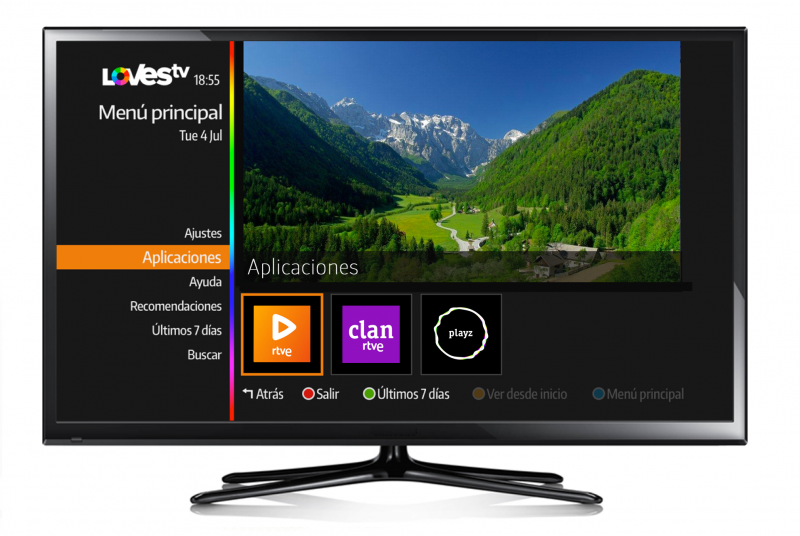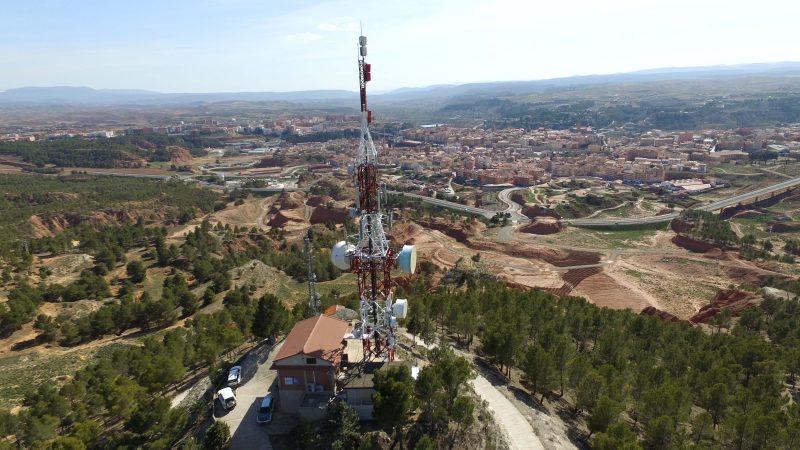Trends
Trends
DEC
14
2020
Technology
The DTT of the future is here
Technology is now essential in all of our activities and the audiovisual sector is not exempt from the digitalisation process experienced by society. Viewers are accompanying it in this evolution, as evidenced by the consumption of audiovisual content, which reached record figures during the weeks of lockdown last spring. Digital Terrestrial Television (DTT) continues to be the main source of entertainment and audiovisual information in Spain, clearly showing us the importance of this communication medium today.
All the players in the sector are working towards its technological evolution from laboratory research to test broadcasts. The result of this work by broadcasters, operators and manufacturers is the television that we know today, with high sound and image quality and equipped with various interactive functionalities.
Cellnex is aware of the role it plays as one of the main actors in the value chain of this sector. “We provide requirements, leadership and active work in international organisations such as the DVB (Digital Video Broadcasting) standardisation body, HbbTV (Hybrid Broadcast Broadband TV), the BNE (Broadcast Network Europe) sector association or even collaborating with the EBU (European Broadcasting Union)”, says Redón, Innovation Product Manager at Cellnex.
And the fact is that Cellnex has participated in the technological evolution of the audiovisual sector right from the outset. “We have been an active part of some key moments like the start of DTT broadcasts and the consequent analogue switch-off; the implementation of high definition; or the launch of LOVEStv for connected televisions”, recalls Redón.
In a relatively short time, we have moved from black and white television to on-demand and interactive high-quality audiovisual content on mobile devices. Despite all these changes, DTT continues to be an essential source of free and reliable information that citizens turn to for information and entertainment.
Hybrid TV, the perfect combination
To adapt to new consumer habits and to use DTT to offer the features of video-on-demand platforms, Cellnex has opted for hybrid television, which combines the world of broadcasting with the world of the Internet. “With Hybrid TV you can consume content in a personalised and accessible way with no time limits from the TV channel itself,” explains Redón. “The necessary information travels through DTT to allow the television to connect automatically to a website and offer the viewer a wide range of content. Additionally, hybrid television makes it possible to connect a mobile phone and simultaneously and synchronously consume DTT content with content received over home Wi-Fi.”
5G, the companion of the audiovisual avant-garde
The high data transmission speed and minimal latency of 5G make it the driver of Industry 4.0. Sectors like the automotive industry (autonomous and connected vehicle), health (e-health), manufacturing (IoT, Artificial Intelligence and robotics in industries) will be some of the great beneficiaries.
But the audiovisual sector is also set to benefit. “5G is a very powerful technology that allows very high transmission speeds, which will be really useful for content generators, who will connect their cameras directly to 5G to be able to transmit content, making live event productions cheaper in all kinds of spaces,” explains Xavier Redón. “For the viewer, 5G can help connect the TV in areas where a cable connection is not viable.”
Towards ultra-high definition
At present, the industry is focused on total migration to high definition (HD), scheduled for early 2023. However, in parallel to this, work is under way on the pilot for 4K type emissions (UHD-1). In collaboration with the RTVE Chair at the Polytechnic University of Madrid (UPM), Cellnex already has 14 broadcasting centres distributed in 11 Spanish provinces offering broadcasts at this quality, substantially improving the sharpness of the image, multiplying the definition provided by HD four-fold and is configured as the natural evolution of DTT.
However, the intention is to go further. The sector continues to develop, as evidenced by the recent UHD 8K signal emission test in DVB-T2 led by the RTVE Chair.
Cellnex is a technology partner in this project, which reveals a series of improvements over the UHD 4K signal, including four times the resolution and new technologies that allow an expanded colour range and high-quality multi-channel audio.
With all this reality, and what is still to come, it is clear that technological development and the services the viewer can enjoy seem to have no limits


















